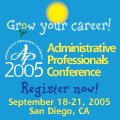 Lifelong
Learning is a philosophy of approaching learning as an integral, inseparable
part of our life’s activities. Here are ten guidelines to help you
formulate your own personalized Lifelong Learning Process. Lifelong
Learning is a philosophy of approaching learning as an integral, inseparable
part of our life’s activities. Here are ten guidelines to help you
formulate your own personalized Lifelong Learning Process.
1. Commit to approach learning as a lifelong journey. Choose to keep
it alive throughout your lifetime. You don't need to attend formal educational
institutions for this process. In fact, you can learn more in small,
consistent spurts than you can in a classroom, if you set up your plan
correctly.
2. Maximize your resources. With lifelong learning, there isn't a structure
like you had in school, so it’s easy to ignore and procrastinate.
If you allow this, eventually the "you snooze, you lose" theory will
catch up with you. A prime example is how changes in the national economy
have hit the IT industry these last few years. The companies that prioritize
learning are still in the game, whereas their competitors who focused
on "what we need now" are out of business. Create a system and plan that
works and can last a lifetime. Keep learning journals for each topic.
3. Maximize your environments. Identify and create settings that support
and inspire you both inside and outside your home. How does the library
spark your learning? How about the mall, the park, or even McDonalds!
Explore different environments and label each one (e.g., "inspiring," "relaxing," "great
for concentration.") What supplies help you keeping your energy up? Do
you need quiet for some learning and busy environments for others?
4. Know how you learn. To learn effectively, know how you learn. How
do you take in information, process, and retain it? There isn't one best
way. Tie everything into a learning purpose and vision. When and how
often does you mind need a break? Do you have reading spurts? How do
you retain the information -- by reading aloud, notes, summarizing in
memory, or sharing with others?
5. Tap into the power of your mind. Your mind’s power is evident
in everything you do. Analytical, critical and creative thinking enables
the mind to process, store, and create all the facts and ideas it encounters.
By practicing different types and ways of thinking, you keep your mind
strong and flexible. Consider it "going to the gym" for your mind! (Talking
about how the mind works is the subject of a huge tome, not a Top 10!)
6. Harness the power of words and ideas. Words, when joined, form ideas,
and are tools with enormous energy. Whether writing a memo, letter, e-mail,
article, or journal entry, make each an opportunity to fulfill a learning
goal. Each is a chance to work toward improving and using words to construct
understandable ideas. Learn to express ideas in writing. This will evolve
into clearer thinking. Keep an idea journal by theme or topic.
7. Absorb, retain, and demonstrate knowledge. What do you do with the
facts, opinions, and stories that you accumulate daily? Listening helps
absorption and memory skills, which enables retention. Listen to a teleclass
or book on tape, then write your own version and master what you learned
by moving it into long-term memory. Listening can be compared to using
a camera. First, you view the image and focus (listening). Next, you
snap the picture (remembering). Finally, you print the image (demonstrate
knowledge). Mastering knowledge means being able to apply it in other
situations.
8. Value diversity. The greater part of our day involves interacting
with others. Experiencing other people’s communication styles,
learning methods, and the roles played in groups and teams helps us to
grow, prosper, open our minds and develop new perceptions. Dealing with
conflict, criticism, and any points of vulnerability strengthens our
ability to use any situation as an opportunity to learn.
9. Take exceptionally good care of yourself. Physical and mental health
affects learning. Examine these aspects and set up contingencies within
your plan to identify and work through all health challenges as soon
as they appear.
10. Map your course. Maximize time, energy and focus by defining a yearly
learning theme. Subdivide into monthly topics with time commitments. (Example:
Ten years ago, I defined a learning goal of three new computer steps in
no more than 15-minutes per day. It has compounded and saved time and money
ever since.) Minimize distractions by learning to "table the other topics." Create
a "next year" folder to contain those great ideas and set up a review month
of tabled topics to decide how to use them in the following year.
About the Author
Catherine Franz, a Certified Professional Marketing & Writing Coach,
specializes in product development, Internet writing and marketing, nonfiction,
training. Newsletters and articles available at: http://www.abundancecenter.com blog: http://abundance.blogs.com |


